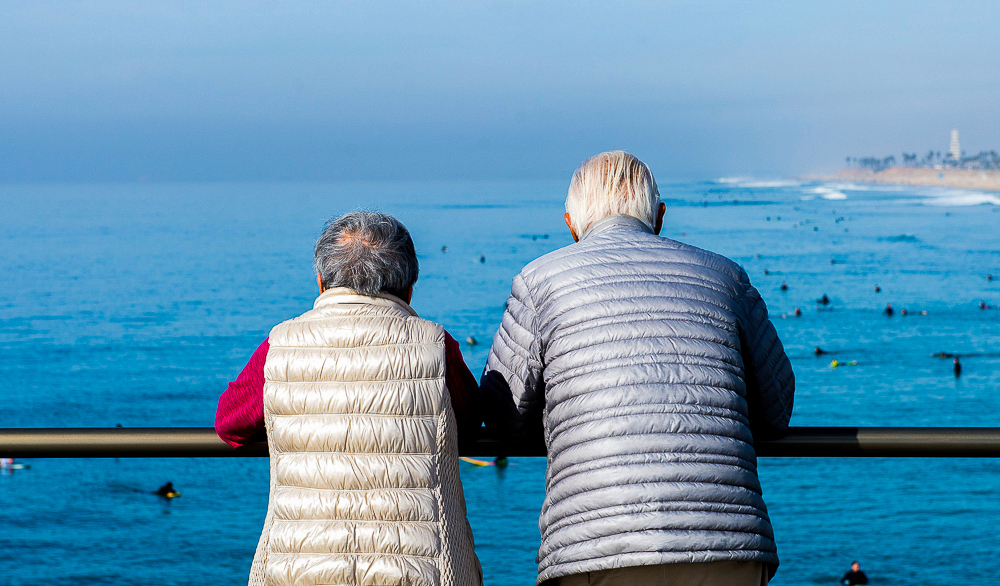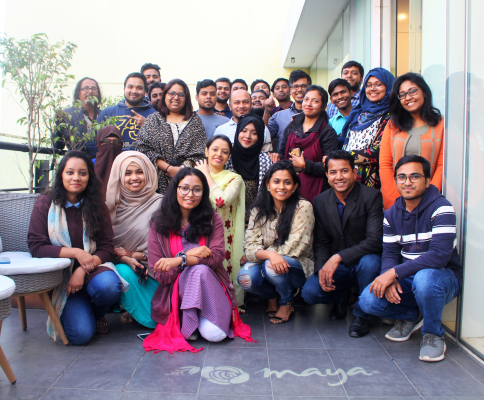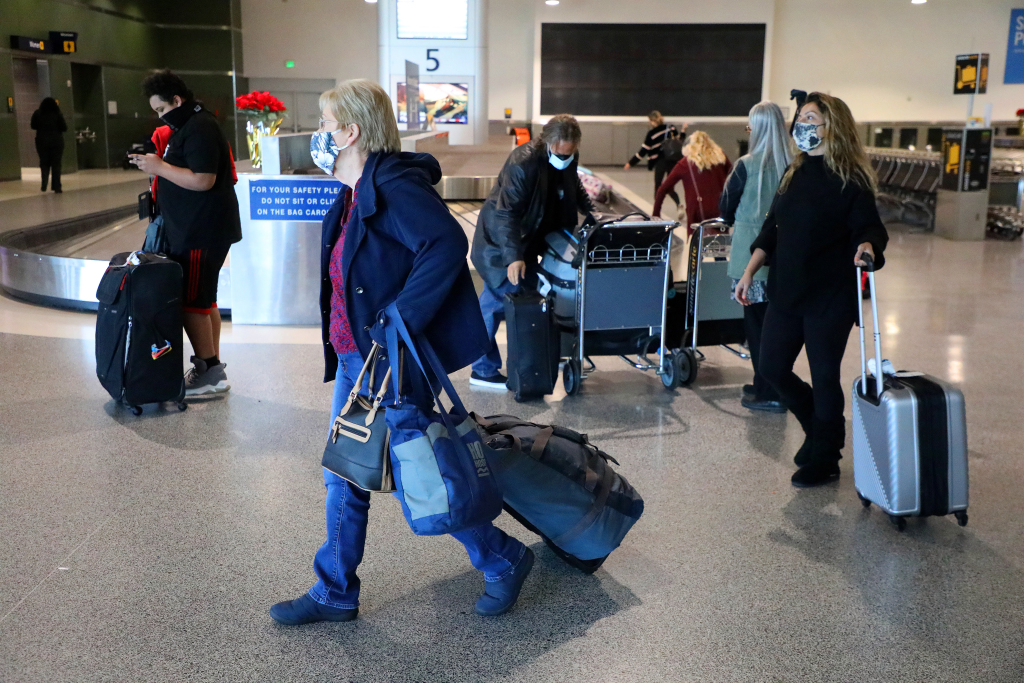For nearly a year, nursing homes and assisted living centers have been mostly closed to visitors. Now, it’s time for them to open back up and relieve residents of crushing isolation, according to a growing chorus of long-term care experts, caregivers, consumer groups and physicians.
They’re calling for federal health authorities to relax visitation restrictions in long-term care institutions, replacing guidance that’s been in place since September. And they want both federal and state authorities to grant special status to “essential caregivers” — family members or friends who provide critically important hands-on care — so they have the opportunity to tend to relatives in need.
Richard Fornili, 84, who lives in a nursing home in St. Marys, Georgia, supports a change in policies. He hasn’t seen any family members since last summer, when a granddaughter, her husband and her two children stood outside his window and called him on the phone. “The depression and sense of aloneness affecting my fellow residents, it’s terrible,” he said. “Having our relatives come back in to see us, it’s an absolute necessity for our well-being.”
“At this point, residents are becoming more likely to die of isolation and neglect than COVID,” said Jocelyn Bogdan, program and policy specialist at the National Consumer Voice for Quality Long-Term Care, citing new data linking COVID-19 vaccination to sharp declines in COVID-related deaths. Her organization has launched a petition drive calling for nursing homes to safely reopen and for essential caregivers to have unrestricted access to loved ones.
Since late December, when vaccinations began, COVID-19 cases in nursing home residents have plunged 83%, while deaths have dropped by 66%, according to an analysis by KFF. As of Monday, 4.6 million residents and staff members in nursing homes and other congregate facilities had received at least one shot of the Pfizer-BioNTech or Moderna vaccine, including more than 2 million who had received a second dose.
Vaccines have “changed everything” and nursing homes are now among “the safest places you can be in your community in terms of COVID,” said Ruth Katz, senior vice president of public policy at LeadingAge, an association representing more than 5,000 nonprofit nursing homes, assisted living centers and senior housing providers.
Last week, LeadingAge called for federal authorities to expand visitation in a letter to top officials at the White House, the Centers for Medicare & Medicaid Services and the Centers for Disease Control and Prevention. In an email, the American Health Care Association, which represents more than 14,000 long-term care providers, also urged CMS and the CDC to review its visitation guidance. AARP, the nation’s most powerful seniors’ lobby, chimed in with a letter noting “a critical need” for new recommendations.
Medical directors at long-term care facilities are also weighing in while sounding a cautious note in new guidance about resuming communal activities and visitation in long-term care facilities. With new coronavirus variants circulating and significant numbers of staffers and potential visitors still unvaccinated, “we’re recommending a measured, step-wise approach,” said Dr. Swati Gaur, chair of the infection advisory committee for AMDA — the Society for Post-Acute and Long-Term Care Medicine.
Facilities that reopen to family members should do so “carefully,” she said, scheduling visits, screening those visitors for symptoms and ideally requiring a negative coronavirus test before entry; limiting the number of visitors in a facility at any time; sending them to designated visitor sites, not residents’ rooms; and requiring the use of masks and gloves, among other precautions.
No one wants to see COVID-19 outbreaks reappear in long-term care facilities, Gaur said — the site of nearly 173,000 coronavirus-related deaths, about 35% of the nation’s total.
CMS instructed nursing homes to lock down almost a year ago, on March 13, as the coronavirus pandemic accelerated and the CDC said no one except relatives making end-of-life visits should be let in. In September, new recommendations allowed outdoor visits, so long as safety precautions such as physical distancing were in place, and indoor visits, so long as a facility was coronavirus-free for 14 days and the positivity rate for cases in the surrounding community was under 10%.
Federal recommendations apply to nursing homes. States regulate assisted living and other congregate care facilities but tend to follow the CDC’s lead. In practice, long-term care facilities vary considerably in how they implement recommended policies.
Also, federal authorities recommended that relatives be able to make “compassionate care” visits when a resident is emotionally distressed, grieving the loss of friends or family members, losing weight or adjusting poorly to the recent loss of family support. But many nursing homes continue to deny these visits, and enforcement needs to be strengthened, AARP observed in its letter.
Melody Taylor Stark said her request for a compassionate care visit with her husband, Bill Stark, was denied in October, when his congestive heart failure worsened. Bill, 84, a resident at Huntington Drive Health and Rehabilitation in Arcadia, California, for five years, was subsequently hospitalized with pneumonia. Stark said she was permitted only one 15-minute visit with him, on Nov. 17, after he returned to Huntington — the last time she saw Bill before his death on Nov. 22. The administrator at Huntington Drive did not respond to a request for comment.
The Essential Caregivers Coalition, of which Stark is a member, is asking that every long-term care resident be able to designate one or two essential caregivers who can come in and out of facilities regularly to provide hands-on care to loved ones, as they did before the pandemic. As the anniversary of lockdowns approaches, the coalition has organized email blasts and letter-writing campaigns to federal and state authorities, a traveling lawn sign campaign in more than a dozen states and gatherings at several state capitols. The campaign’s slogan: Isolation Kills, Too.
Mikko Cook, 49, of Ventura, California, is one of the group’s co-founders. Her father, Ron Von Ronne, 77, has late-stage Alzheimer’s disease and lives in a 200-bed nursing home in Albany, New York. Before the pandemic, Cook’s brother visited almost every day.
“The home was severely understaffed and when my family members would go in to take care of him, my father’s sheets would be soiled. He wouldn’t have showered. The bathroom was never clean. But they would take care of that,” Cook said.
After the lockdown, Von Ronne went more than three months without seeing or talking to family members. Over the past year, he nearly stopped communicating, was assaulted by a fellow resident and lost almost all his belongings, which were either misplaced or stolen, Cook said. Von Ronne has since had two outdoor visits with relatives, and three short visits in family members’ homes at Christmas and in January and February.
Mary Daniel, 58, founded another activist group, Caregivers for Compromise, after getting a part-time job in July at her husband’s assisted living center in Jacksonville, Florida — the only way she could see him. Steve Daniel, 67, has early-onset Alzheimer’s, and she had visited every evening before the pandemic.
After stories about her went viral, Daniel created Facebook groups in every state for caregivers who wanted more access to their loved ones. Now, Caregivers for Compromise chapters in Connecticut, Florida, Illinois, Kentucky, North Carolina, New York, Pennsylvania, Tennessee, Texas and West Virginia are active in the Isolation Kills, Too campaign.
“We’re getting impatient: Our loved ones’ quality of life is deteriorating every single day. My husband has been vaccinated and he wants to go outside and feel the sunlight on his face. It’s time to open back up and let him live whatever time he has left with freedom,” Daniel said. “You cannot protect people like him forever, from everything.”
Kaiser Health News is a nonprofit news service covering health issues. It is an editorially independent program of the Kaiser Family Foundation, which is not affiliated with Kaiser Permanente.










